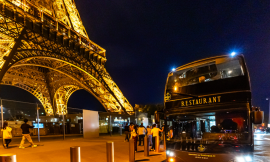Between Paris and its six train stations, it’s a bit of a love-hate relationship. That’s the expression used by Stéfan Bove when he talks about the history of the capital with these particular transit hubs. “The train stations had to prove their usefulness in the 19th century, accused of disfiguring the city. But the architects turned them into iconic monuments, bringing in new materials in their construction, glass and steel,” says the urban planner at the Paris Region Institute.
Paris train stations may have become “important centralities in the city” but they still suffer from a poor reputation. Stéfan Bove analyzes the challenges they currently face.
Paris train stations are important for travel, but not only that. In the past two decades, they have transformed into shopping centers. What is your view on these new living spaces?
STÉFAN BOVE: The diversification of services and waiting areas has allowed for the modernization of these outdated spaces. But by becoming shopping centers, train stations are now in competition with the local shops already established in the neighborhood. That poses a problem, but it’s still interesting for a resident if the shops in the station are open on Sundays or have extended hours. Each train station has a unique situation in its neighborhood, the contexts are different. For example, the project at Gare du Nord was heavily criticized in its commercial dimension, but much less so at Montparnasse where the offer between the train station and the Ateliers Gaîté raises just as many questions.
Recent surveys show a certain anxiety and a sense of insecurity among residents around train stations. How can they be reassured?
Several ingredients are necessary to reduce the sense of insecurity: human presence, interior and exterior design with suitable urban furniture, signage, and lighting. The actors in the Parisian transportation system are working on this issue of security: IDFM will strengthen its teams in the field with 1,000 new agents. A more qualitative treatment of public spaces also helps to better control the flow and gatherings of people around train stations, especially at Gare du Nord.
Stéfan Bove works in the Urban Planning, Development, and Territories department at the Paris Region Institute. DR
Security, shops, opening up to the city… It’s not easy to find the balance?
Overall, things have evolved a lot in recent years. Significant investments have been made to modernize the spaces and commercial offerings. Gare du Nord still needs a better synergy with Gare de l’Est, a physical connection for example. But improving the use of a train station also involves a more comprehensive action at the scale of a neighborhood, with the development of its surroundings, its forecourt, pedestrian access, secure bike parking, taxi stands. And transforming existing spaces while taking into account the future needs with the introduction of the Grand Paris Express train stations, and all the challenges to overcome regarding these new connections and flows.


